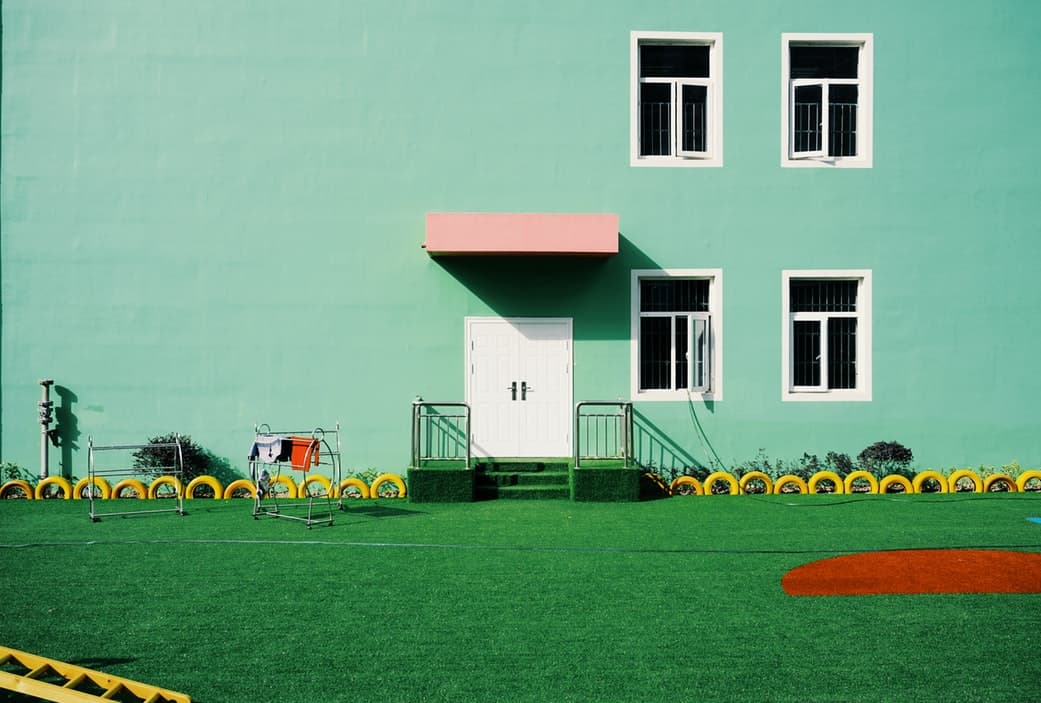5 Ideas To Beautify Your Home's Exterior
By Editorial Team
Updated on November 7, 2023

Although summer is drawing to a close, it’s never too late to plan how to decorate the exterior of your home. Whether it’s a new construction project or you’re the owner of an apartment, you have several options to refresh your exterior.
Without having to pay a huge sum of money, it’s easy to create your little paradise with simple and practical ideas. These ideas are practical and easy to create, without breaking the bank.
5 simple and affordable ideas to improve your home’s exterior
1- Refresh exterior paint
If this is a possibility for you, refreshing the exterior surfaces of your home is a simple solution, but one with a significant impact. If you’re feeling daring, vibrant and original colour will get you out of your comfort zone while beautifying your home. On the other hand, neutral colours will give a distinguished effect.
If you prefer a more discreet look, painting your door or your window frames is an excellent alternative that offers your facade a little facelift. If you have a front porch or patio, this is another option you may consider.
Here are some articles to read about exterior painting:

Photo: countryliving
2- Endless greenery
When springtime comes, take your front garden to another level by introducing different plants and flowers that can add life to your land. If you live in an apartment, your front or rear balcony is not exempt.
You can build a few flower boxes, hanging plants, grow a garden and so forth. Let your imagination run wild! Create your little secret garden. Check out the following articles for more tips and ideas:

Source: myparadissi
3- Ambient lights
By adding light garlands to your patio, balcony or pergola, you will create perfect mood lighting when your friends and family come over, whether for a few cocktails or for dinner.
For more of an impact in the front of your home, a few lanterns along your entrance path will illuminate your facade and offer a flamboyant look to your lot. Several lanterns are easy to install by simply poking them directly into your lawn.

Photo: refinery29
4- Relaxation area
Perfect for smaller balconies, a relaxation area is filled with cushions and accessories, which will live perfectly alongside your plants and a stellar way to impress guests. For more privacy, add a trellis to your balcony bars to complete your cocoon.
This project is just as feasible for homeowners. It’s easy to replicate a similar atmosphere on a back patio, but it’s also possible to make a separate space in your backyard. A few patio tiles, an installation to protect you from the rain, a comfortable layout and voila!

Photo: Pinterest
5- Floating chairs
In addition to your comfort corner, installing hanging chairs can be the perfect touch to complete your project. By hanging two of them side by side, or pairing them with an outdoor chair of similar material, you’ll have an ideal place to sit in the sun with friends.
However, it’s essential to make sure that you can hang things from the ceiling of the balcony, making sure the weight can be supported. For this reason, we’d suggest getting help from a certified contractor who can tell you if this option is available to you.
If you can’t hang these from the ceiling, other versions have chairs suspended on legs. Regardless of your setup, you can enjoy this option.

Photo: livingaftermidnite
Get 3 renovation quotes for your exterior siding renovation project
RenoQuotes.com will put you in contact with 3 reliable contractors for your exterior siding renovation project. Fill in the form on our homepage (it only takes a few minutes), and you will receive quotes from trusted professionals.
Dial 1-844 828-1588 to speak with one of our customer service representatives
Looking for something else?
Related articles
The latest industry news, interviews, technologies, and resources.

Cynthia Pigeon
•07 Nov 2023
Roofing underlayment isn’t a luxury. It’s the one element that guarantees a decent and weather-protected structural design.

Editorial Team
•13 Jan 2025
Is having to bundle up before heading out for work already making you dream of warmer weather? Don’t worry, sunnier times are ahead.

Editorial Team
•02 Aug 2024
The shed has come a long way since it’s modest days of being a wooden box that holds gardening materials. Modern sheds have developed to host a variety of functions, aside from keeping landscaping tools clean and dry. Now, a shed can be turned into backyard haven, home-away-from-home, or a retro space to live out your hobbies.

Amanda Harvey
•17 Feb 2025
Water infiltrations into your basement can be caused by a wide variety of things. These can include heavy rainfall on the building's envelope, poorly sealed windows, doors and exterior walls as well as storm sewers backing up.

Editorial Team
•07 Nov 2023
Today, the importance of having a functional French drain in place to benefit your foundation has been well established. In Quebec, winter and spring weather, as well as the likelihood that your dwelling’s foundation is in proximity to a phreatic zone, can definitely put a strain on concrete foundations if not properly drained.